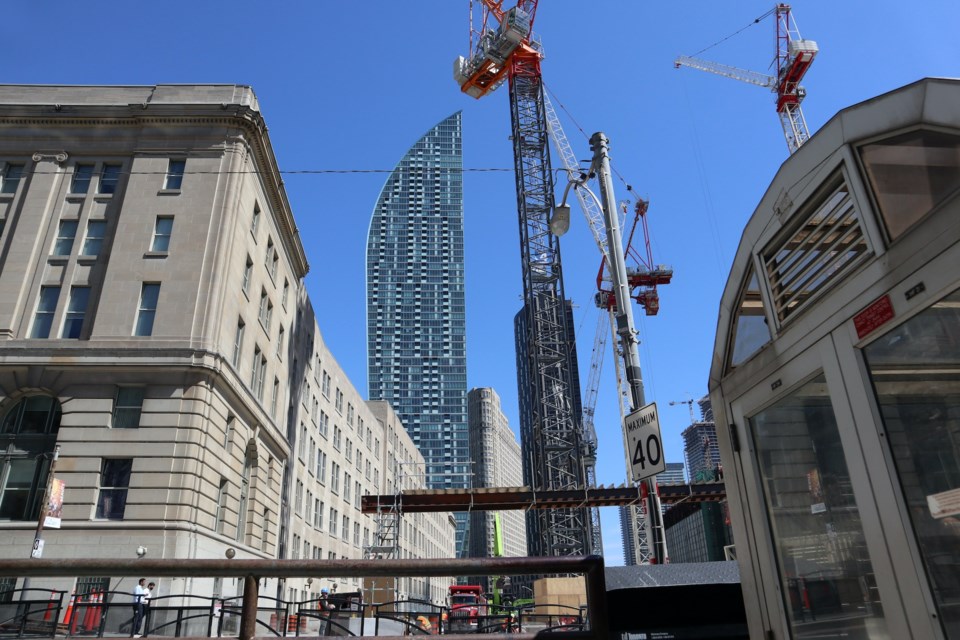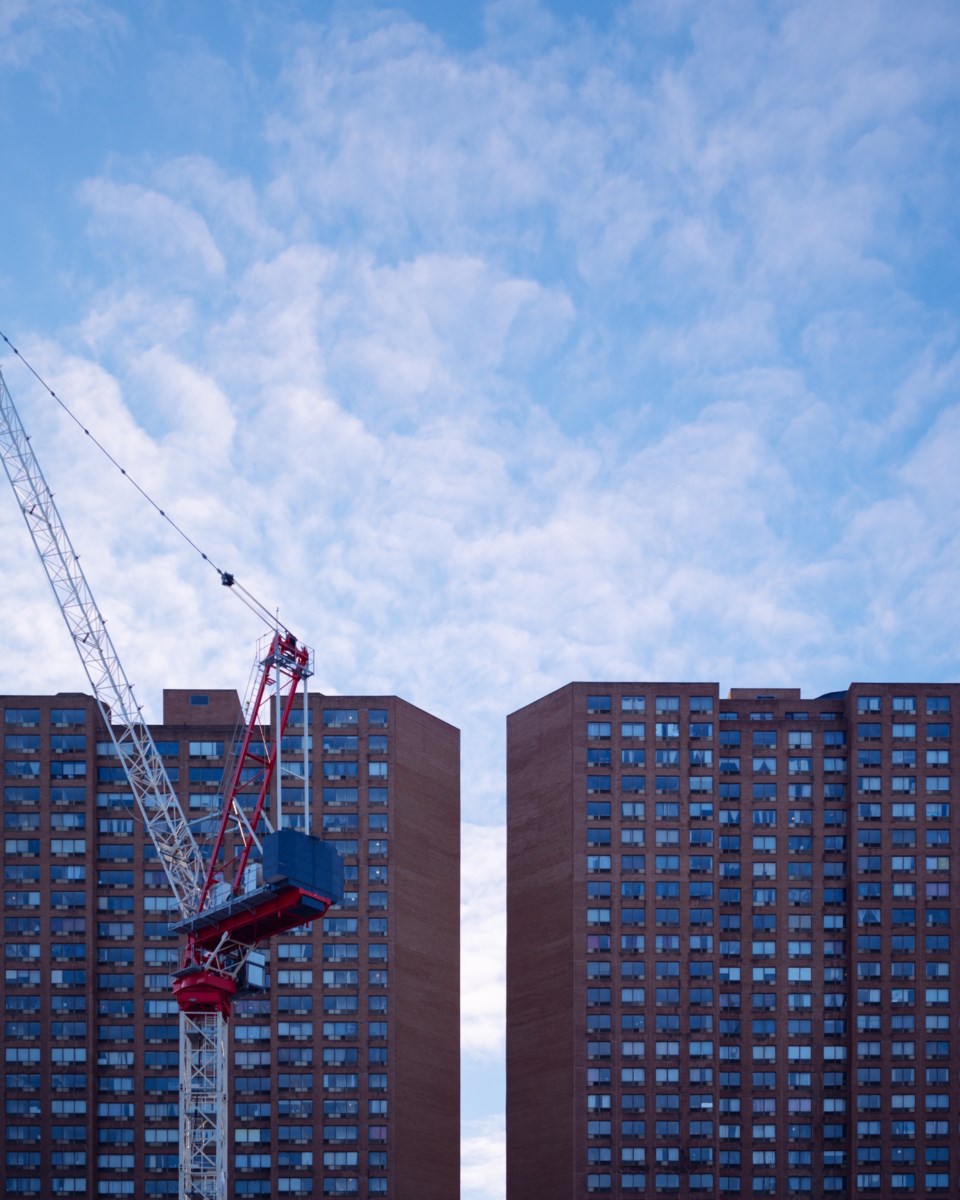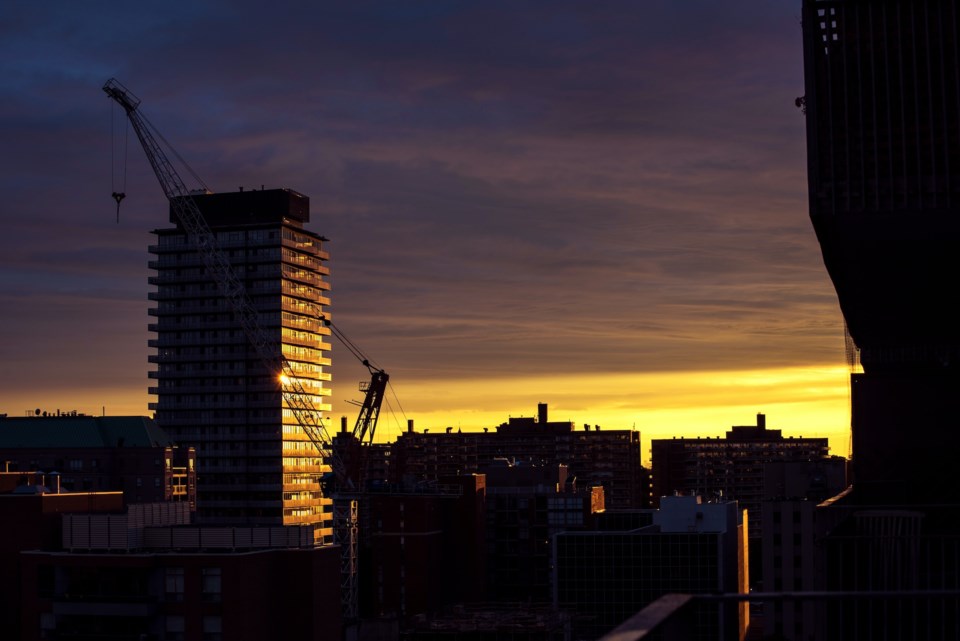This story is part of a partnership between The Green Line and The Trillium for readers who care deeply about Toronto and the people, policies, and politics at play. We’re pairing The Green Line’s unique community-driven, solutions-oriented journalism with The Trillium’s signature insider coverage of Ontario politics and policy to dig deep into the city’s problems and connect you with the plans the Toronto mayoral candidates are proposing to fix them. This article was originally published on TheGreenLine.TO
As part of our ongoing coverage of the 2023 Toronto mayoral by-election, The Green Line asked both our audience and all candidates to complete a survey, which included a question where they had to rank the policy issues they’d prioritize for the city today. It was a landslide: Community members and candidates alike chose housing as their number-one concern by a large margin. So by popular demand, here’s a deep dive into Toronto’s housing crisis, and how it’s shaping the race for mayor.
Toronto is in a housing crisis, but a recent city report suggests it’s really two housing crises: one where workers earning moderate incomes struggle to find affordable rentals, and another where low-income earners struggle to access any housing at all and find themselves unhoused. Both problems are widespread. City staff estimate that one in three residents are struggling with affordability, while 135,000 are crammed into homes too small for their needs and over 10,000 were unhoused in the latter months of 2022.
Supply is a big part of the problem. Citing a report from the Building Industry and Land Development Association (BILD), the city estimates that 300,000 new rental homes in the GTA will be needed by 2031 to make up for our existing shortage and to respond to future needs. Toronto’s population could grow by another 253,000 people in the same period, all of whom will need somewhere to live.
In May 2023, under pressure from the Ontario government, the City set a target of building 285,000 new homes by 2031. That’s a big number: It would mean increasing Toronto’s housing supply by almost a quarter in just 10 years. Or, as the city report helpfully points out, it’s the equivalent of adding a whole North York worth of homes — and doing so twice as fast as we’ve already been building.
This is the challenge facing the next Mayor of Toronto. Unsurprisingly, each of the leading mayoral candidates has said something about housing. But there are big differences in how each of them plans to tackle the problem.

The first big question is: Who should build the housing? For the past few decades, that job has been left to the private sector: individuals and companies that build houses, apartments and condos so they can make a profit. This has resulted in plenty of homes being built in Toronto (just look at all those cranes!), but it’s also led to a rise in rents and house prices, as developers seek the highest profit margins. A recent Toronto Metropolitan University study found that between 2006 and 2016, 14 times as many condo units were built than purpose-built rentals, and the number of units renting for over $1,500 per month grew by four times.
Now, several candidates are proposing that the city build housing itself. The city owns a lot of land — 25 million square feet — so it could in theory build homes there, and set more affordable rents. Notably, the city has been trying to do this; it launched the Housing Now initiative in 2019, which promised to build over 10,000 new affordable housing units on public land. Yet three years later, none have been started.
Several candidates are eager to change this. “Currently, most development on public lands is outsourced to private developers that build housing with high profit margins,” wrote Josh Matlow in response to The Green Line’s survey. By establishing a city agency to build housing instead, he says, “We will be able to remove developer margins and build housing at cost,” leading to the construction of 8,250 rent-controlled apartments and 6,750 affordable apartments — 750 of which would be for people on “very low or fixed incomes.”
Olivia Chow is promising even more, saying the city could build 25,000 rent-controlled homes over eight years, with a minimum of 7,500 affordable units. Mitzie Hunter has also committed to building on city land, promising 22,700 units with a mix of rent-controlled market rate, affordable and rent-to-own apartments.
There was a time when such public-building was the norm. From the 1960s to the 1990s, the federal government funded many new housing projects, leading to the construction of most of Toronto’s existing purpose-built rental apartments. But in the 1990s, this responsibility was offloaded to the city, and no public affordable housing has been built since.
Some candidates, however, say rather than bringing government back into the game, we should get them out of the way. The city plays a major role in vetting and approving new housing projects, and many get stuck in that process: 101,000 purpose-built rental homes are currently under city review, and won’t get built until staff give the go-ahead.
Brad Bradford has promised to streamline those processes, allowing the private sector to build more homes, sooner. In response to The Green Line’s survey, he promised to “build a culture of saying ‘yes’ so that more homes can get built faster.” Similarly, Mark Saunders has committed to providing city land to builders who promise to construct affordable housing, and cut the time it takes to approve building applications to just one year.
Notably, Chloe Brown’s campaign takes this procedural approach to the extreme, proposing a full re-organization of the city hall bureaucracy, complete with a new $2.3-billion agency devoted to shelter and housing.
Changes to zoning are another way to open up more housing stock: The city has a variety of rules about what kind of buildings can be built where. Hunter’s housing policy promises low-interest loans to builders of multiplexes (i.e. low-rise buildings with a handful of units), while Bradford has promised to “simplify” zoning bylaws to allow more mid-rise apartments on major streets. Beyond the public and private sectors, there are also non-profits, such as land trusts, which seek to provide housing at-cost. Several candidates, including Hunter, Bradford, Brown, Chow and Bailão have pledged to support these organizations in their efforts to get housing built.

The second big question with housing is: How should we pay for it? The city is in a huge budget hole, with $1.56 billion worth of programs and services it simply can’t fund. This has led some candidates to pitch themselves as the best at asking the provincial and federal governments for money. Bailão in particular has campaigned as an experienced negotiator who can work with other levels of government to solve the city’s budget woes.
The city can generate its own revenue, mainly through property taxes; this impacts homeowners directly, however, and has often been a touchy subject in municipal politics. But Chow is going there by proposing an unspecified increase in property taxes to fund her housing pledges. The exact amount, she says, will be decided after she requests assistance from the provincial and federal governments.
There’s also the option of lowering taxes, in the hopes of helping developers build more housing, and incentivizing them to make it affordable. Saunders, in particular, has promised to cut taxes for private-sector builders of affordable housing, while Anthony Furey has promised to phase out the city’s land transfer tax.
Most candidates have at least some mix of these strategies but are fighting hard to differentiate themselves by doubling down on certain aspects. Bailão emphasizes her negotiation skills. Chow and Matlow are going hard on public housing. Bradford is cutting red tape for the private sector. Hunter is playing up her experience as a provincial member of parliament, brandishing her detailed platform at every opportunity, and Saunders is promising leadership experience, broadly-defined.
Each of these distinctions is ideological as much as practical, especially when it comes to beliefs about the government’s place in the market. Public housing advocates like Chow and Matlow cast housing as a social good to be provided by the state, while conservative-leaning Bradford favours the free market unencumbered by city bureaucracy. In the centre are politicians like Bailão and Hunter who promise good negotiation and detailed policy pledges, respectively.
But is any of it enough? Recall that Toronto needs 285,000 homes by 2031. Of the leading candidates, only Bailão has promised to hit that number, but she does not provide a specific plan to do so. And while Hunter, Chow and Matlow have promised to build housing on public land, the most ambitious of them — Chow — would only build 25,000; that’s just over 10 per cent of Toronto’s target.
Of course, the city would not be responsible for building every home needed to reach its target. But the gap between promises and reality speaks to the peculiar state of our modern city government. Although it may represent the city in name, its tools are limited, and the local government has neither the ability nor the jurisdiction to solve all of its problems alone.
You can read more about the province's housing plans in an article by The Trillium, here.




